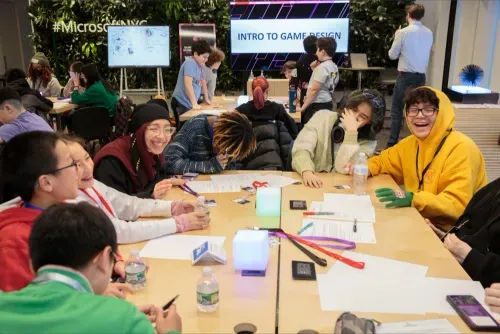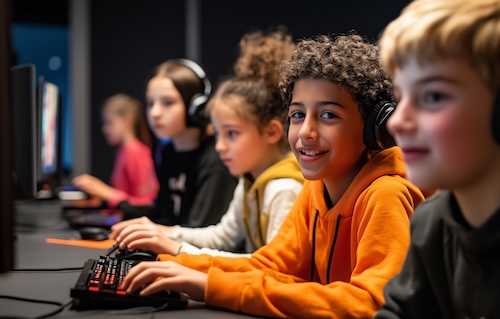Key points:
When Collegedale Academy, a PreK–8 school outside Chattanooga, Tennessee, needed a new elementary building, we faced a choice that many school leaders eventually confront: repair an aging facility or reimagine what learning spaces could be.
Our historic elementary school held decades of memories for families, including some who had once walked its halls as children themselves. But years of wear and the need for costly repairs made it clear that investing in the old building would only patch the problems rather than solve them. At the same time, Southern Adventist University–on whose land the school sat–needed the property for expansion.
Rather than cling to the past, we saw an opportunity. We could design a new, future-focused environment on our middle school campus–one that reflected how students learn today and how they will need to learn tomorrow.
Putting students first
As both a teacher and someone who helped design our middle school, I approached the project with one condition: every design choice had to prioritize students and teachers. That philosophy shaped everything that followed.
My search for student-centered design partners led us to MiEN. What impressed me most was that they weren’t simply selling furniture. They were invested in research–constantly asking what classrooms need to evolve and then designing for that reality. Every piece we chose was intentional, not about aesthetics alone, but about how it could empower learners and teachers.
Spaces that do more
From the beginning, our vision emphasized flexibility, belonging, and joy. Every area needed to “do more,” adapting seamlessly to different uses throughout the day. To achieve this, we focused on designing spaces that could shift in purpose while still sparking curiosity and connection.
Community hubs reimagined: Our cafeteria and media center now transform into classrooms, performance stages, or meeting spaces with minimal effort, maximizing every square foot.
Interactive, sensory-rich design: An interactive wall panel with a ball run, sensory boards, and flexible seating encourages students to collaborate and explore beyond traditional instruction.
Learning everywhere: Even hallways and lobbies have become extensions of the classroom. With mobile whiteboards, soft seating, and movable tables, these spaces host tutoring sessions, small groups, and parent meetings.
Outdoor classrooms: Students gather at the campus creek for science lessons, spread out at outdoor tables that double as project workspaces, and find joy in spaces designed for both inquiry and play. Walking into the building, students immediately understood it was made for them. They take pride in exploring, rearranging furniture, and claiming ownership of their environment. That sense of belonging is priceless and drives real engagement in the learning.
Supporting teachers through change
For teachers accustomed to traditional layouts, the shift to flexible spaces required trust and support. At first, some colleagues wondered how the new design would fit with their routines. But once they began teaching in the space, the transformation was rapid. Within weeks, they were moving furniture to match their themes, discovering new instructional strategies, and finding creative ways to engage students.
The beauty of this approach is that it doesn’t dictate a single method. Instead, it enables teachers to adapt the space to their vision. Watching colleagues gain confidence and joy in their teaching reinforced our original intent: create an environment that empowers educators as much as it excites students.
A partnership that mattered
No school leader undertakes a project like this alone. For us, partnership was everything. The team that supported our vision felt less like outside vendors and more like collaborators who shared our dream.
They weren’t just delivering products; they were helping us shape a culture. Their excitement matched ours at every step, and together, we turned ideas into realities that continue to inspire.
Immediate and lasting impact
The outcomes of the project were visible from day one. Students lit up as they explored the new features. Teachers discovered fresh energy in their classrooms. Parents, many of whom remembered the old building, were struck by how clearly the new design signaled a commitment to modern learning and to prioritizing their children’s futures.
Financially, the project was also a smart investment. Multi-purpose areas and durable, mobile furnishings mean that every dollar spent generates long-term value. And because the spaces were designed with flexibility in mind, they will remain relevant even as instructional practices evolve.
Looking ahead
The success of our elementary project has created momentum for what’s next. Collegedale is already planning high school renovations guided by the same student-first philosophy. The excitement is contagious, not just for our community but for how it models what schools can achieve when they align design with mission.
For me, this project was never just about furniture. It was about creating a culture where curiosity, creativity, and joy thrive every day. With the right partners and a clear vision, schools can build environments where students feel they belong and where teachers are empowered to do their best work.
As education leaders consider their own building projects, my advice is simple: design for the learners first. When students walk into a space and know, without a doubt, that it was built for them, everything else follows.










